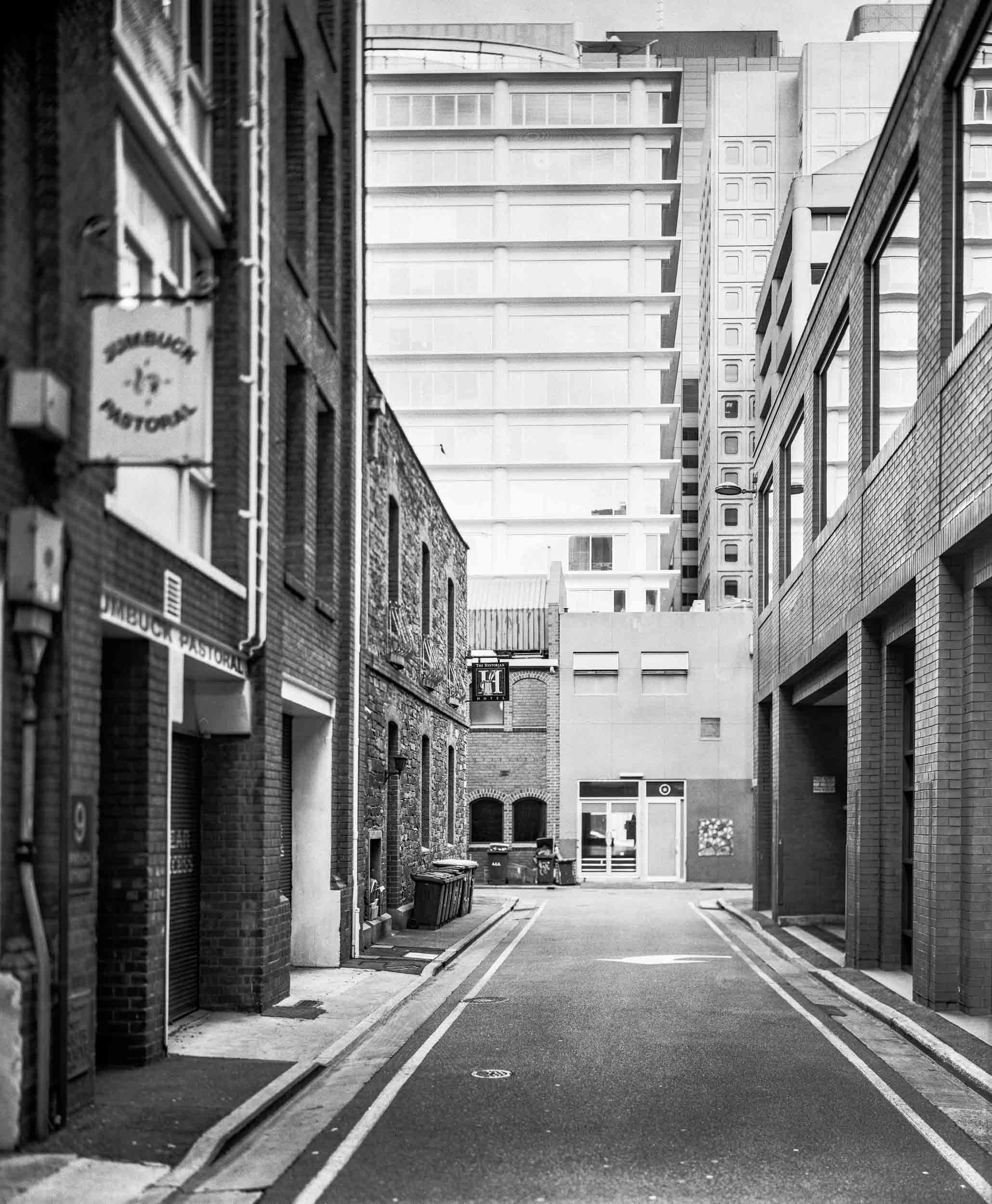History
After I left the city and moved to live on the coast I decided to drive to Adelaide early on a Sunday morning to photograph the history of the CBD though its architecture. It was early Sunday morning was chosen because I wanted empty streets — no people and no parked cars. It would be just the buildings and their relationships. The idea was that I could represent the old and new architecture to signify the history of the CBD
Adelaide had its small streets and laneways bother were really seen as such, especially in contrast to Melbourne.I decided that using the 8x10 Cambo monorail and black and white film would be the best way to represent history of 19th and twentieth century Adelaide because black and white is a form of abstraction and a simplification.
French St, Adelaide CBD
Old, gloomy and claustrophobic was what I had in mind, as It was the nineteenth century city that I was basically photographing. The modernist buildings of the twentieth century were emerging from within the nineteenth century city.
I have no idea why I didn’t do this large format photography whilst I was living in the CBD. It would have been so much easier to do. I cannot remember why I didn’t do more. It was probably because I didn’t really have much of an idea of walking the city as an aesthetic practice, even though walking the city with large format camera was very different to walking the city with a hand held camera.
French St + Coromandel Place
I didn’t really know the history of walking the city or the literature on it. I was simply walking the city with standard poodles and taking photos as I walked without an awareness of walking art or walking as an artistic practice or medium. The walking was a mode of discovery.
I was unaware of Henri Lefebvre’s contention that all spaces, including the public space of cities, are constructions that are shaped by certain ideologies that determine and control the ways in which the constructed spaces function. The same with Michel de Certeau’s focus on the pedestrian as an everyday practitioner of the city and on the everyday pedestrian acts that elude, subvert, or disrupt the dominant spatial order of the city;


